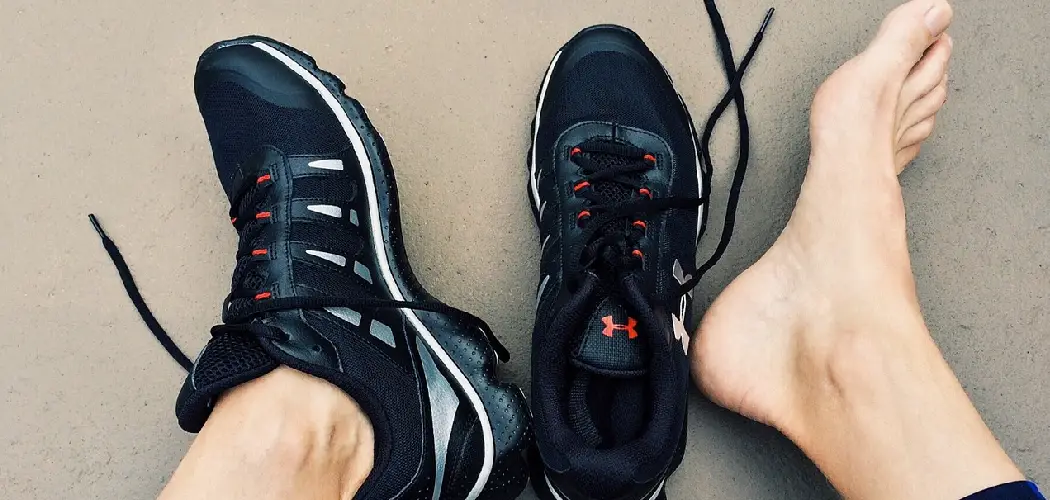We’ve all been there. You’re getting ready to go on a run, or maybe you have an important meeting, and you realize that your shoes are laced wrong. Suddenly, everything feels more complicated. You might even feel like giving up on lace shoes altogether! But don’t worry – we’re here to show you how to lace shoes for plantar fasciitis. In just a few easy steps, you’ll be able to ditch those pesky problems and focus on your day-to-day activities. So grab your laces, and let’s get started!
Plantar Fasciitis is extremely common. It’s caused by tension on the ligament that runs across the bottom of your foot, causing pain and discomfort around your heel. If you lace up your shoes too tightly, it can cause sharp pains in the middle of your feet, making it even more challenging to walk.
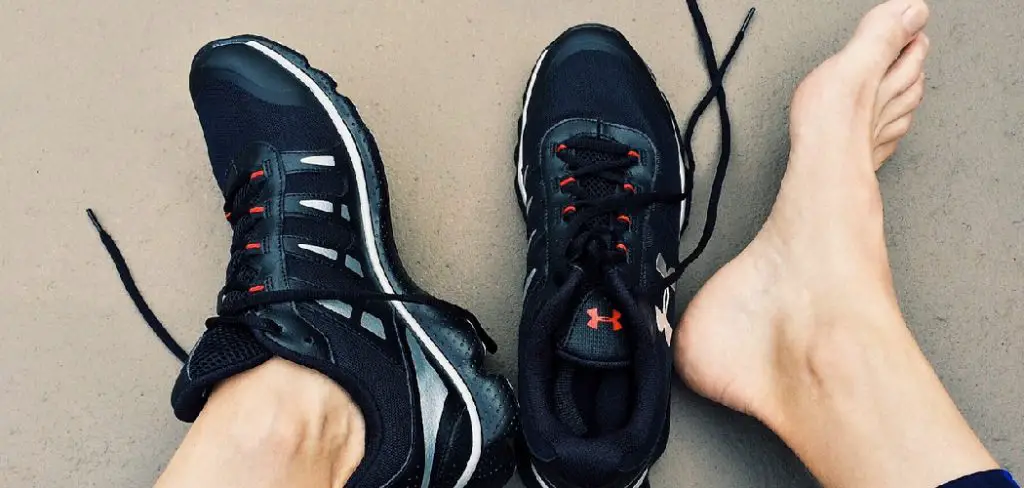
Summary: Lacing shoes properly can help people with plantar fasciitis experience better comfort and support while walking or running. It involves using specific lacing techniques to adjust the tension and pressure on different parts of the foot. Also, choosing the right type of shoe and using orthotic inserts can improve the condition. Overall, taking care of your feet is crucial for managing plantar fasciitis and lacing shoes is an important aspect of it.
Symptoms of Plantar Fasciitis
Plantar fasciitis is a very common injury with some fairly clear-cut symptoms. If you’re suffering from plantar fasciitis, you’ll probably notice the following:
- A sharp or burning pain on the bottom of your heel, usually only on the first few steps in the morning following a long period of rest. The plantar fascia itself can be very tender to pressure at this point. Over a day, the pain associated with plantar fasciitis should decrease as your daily activities. The burning sensation may come and go throughout the day at different points along your foot – not just immediately around your heel – but shouldn’t last longer than half an hour at a time.
- Difficulty getting out of bed in the morning because it hurts so much to put weight on that area. You might have trouble bending down to tie up your shoes because it’s so painful to put any weight on your foot.
- The bottom of your heel or arch might look slightly red. Some people describe the pain as a dull ache; others say it feels like a sharp knife poking into their heel
- Stiffness and tightness in the calves. After all, this is usually where the plantar fascia originates, which means that this sensation usually comes hand-in-hand with plantar fasciitis. It’s not unusual to feel stiffness in your arches if you have this condition.
Symptoms of Plantar Fasciitis Demonstration
- Lack of blood supply to the area can cause numbness and coldness while standing or walking for extended periods can also cause the plantar fascia to become inflamed. This usually happens in people who are overweight.
- People tend to feel pain when they take their first few steps in the morning because the foot has been in a flexed position all night long and the arch has tightened up.
- Pain can also be felt after sitting for an extended period with the foot flexed, such as when riding in a car or on an airplane. Simply bending your ankle downward can relieve this discomfort almost instantly.
- Activities that place extra stress on the feet, such as running or working out at a gym, can cause pain, too – particularly if you increase your workouts without stretching out your calves beforehand. The same is true of sports like basketball or soccer.
- If you walk barefoot on hard surfaces frequently, this can also cause plantar fasciitis or worsen an existing condition.
A Step by Step Guide on How to Lace Shoes for Plantar Fasciitis
Step 1: Determine How Your Shoe Laces are Now
When you have plantar fasciitis, the first thing to do is determine how your shoelaces are now. How they wrap around your foot and secure, is essential as it can make a difference if you suffer from heel pain. All shoes work differently as far as lacing them with proper support. The majority of running shoes have a medial post that comes up mid-foot, holding an additional structure for arch support. This medial post is often more prominent on shoes designed to relieve foot pain and plantar fasciitis. When you lace your shoe, there are a couple of options to create the best support for your foot arch.
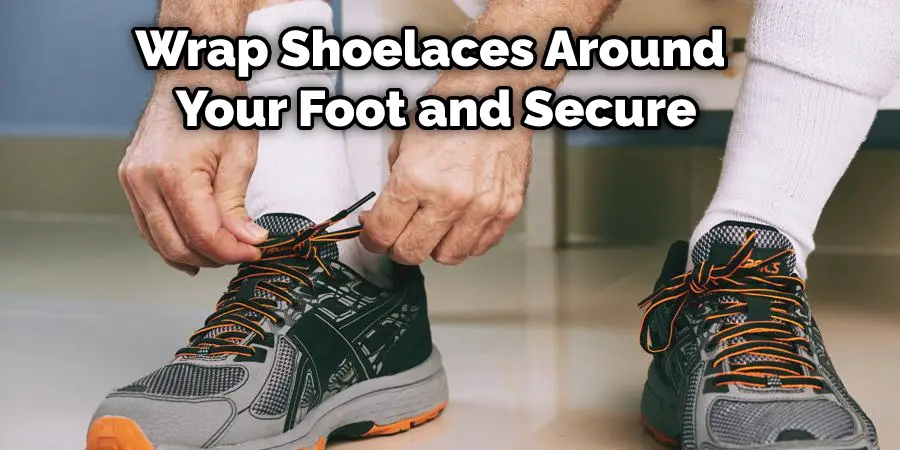
Step 2: Determine How to Tie Your Shoes
Two main lacing patterns can be utilized for the best support. The first is a modified straight lace that comes up and over at the bottom, as most traditional shoelaces do. You then cross them in an X, wrap around and tie it off on the other side. If you have plantar fasciitis, this method may make your heel slip inside your running shoes and aggravate your feet even more due to no arch support or added stability.
Our recommended way to lace your running shoes with better support is to create a triangle pattern that will help lock down your foot so that you don’t feel any movement from side to side when you step. This is done by simply skipping the bottom lace hole and coming up either side of your shoe, crossing them in an X across the top. Going back down through the closest side lace hole on the other side followed by coming up just below it then crossing over to create that straight diagonal line.
Step 3: Tie Your Shoes Tight Enough Not to Slop Around
When you lace your shoes tight enough that there is no slop or movement with the foot inside of the shoe, but also not so tight that it starts to cut off circulation. You are looking for just the right fit which isn’t too loose or too tight for maximum support. Below are some pictures demonstrating both methods of lacing techniques discussed above, one at a time here. You can see how there is no slippage within the shoe, but not too tight that it cuts off circulation.
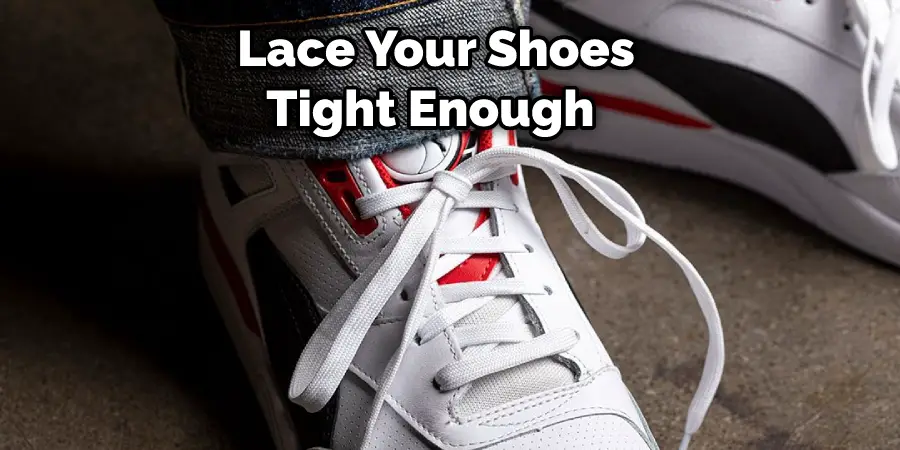
Step 4: Replace Your Current Shoelaces to Prevent Further Injury
After you have laced your shoes for Plantar Fasciitis, you will want to replace your current shoelaces with either some stronger nylon ones or flat cotton ones. These are less likely to stretch out as quickly as traditional lacing does, which causes slippage of the foot inside the shoe. When the heel regularly slips inside of running shoes, it causes irritation and injury through continued use, leading to further pain and plantar fasciitis flare-ups. Changing the lacing first is the best way to ensure that you don’t have future issues with tendonitis, ankle sprain, or foot ulcers for not being appropriately laced.
Step 5: Prevent Your Heel from Slipping Loose in your Shoes
This phase deals with how you lace around the medial post of an elevated shoe design, such as motion control running shoes for plantar fasciitis and extra stability. These shoes often come with a medial post that runs up the center of them called a ‘medial post’ or arch support built into them. This structure holds down your arch and gives you additional stability inside running shoes if you tie your shoelaces around it, as shown here.
You Can Check It Out to Are Ryka Shoes Good for Plantar Fasciitis?
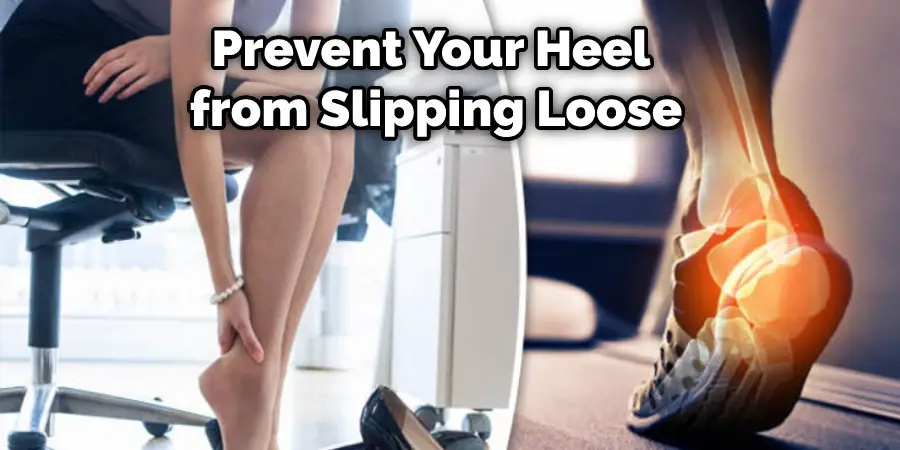
Step 6: Lace Shoe for Over-Pronation
The next type of lacing that you should be aware of is geared towards those who over-pronate. This means that the foot tends to roll inward too much when running or walking instead of being straight. If you suffer from this, it will cause pain in your feet and significant injury through continued use if not treated.
This affects where you lace up inside your shoe by starting low on the medial side and working your way up across the top to the opposite side. You then follow the same lace-up pattern as before by going back down and across at the bottom, but this time it creates a zig-zag way going from one side to the other. Again, this will keep your foot from rolling too much inward, where it can cause injury.
You Can Check It Out to Difference Is a Half Shoe Size
Step 7: Tie Shoes with No Handles
The final lacing method is designed for those missing fingers who do not like how the shoelace handles feel on their hands. If this is the case, you will want to skip the traditional handle type loops altogether and go around your feet entirely. This makes it very difficult to give yourself additional support by tightening down your shoelaces, but it may be perfect for you if you are looking at comfort more than anything else. The only thing that limits this method is if you ever need to take them off quickly without undoing all of your laces first by sliding them off your foot inside your running shoes.
Step 8: Tie Shoes on Top of your Foot
Last but not least, you can tie shoes directly on top of your foot instead of underneath it. This is for those who are less mobile or have a degenerative condition that doesn’t allow them to bend their ankles easily. This works very similar to the method used by people with flat feet where they do not have an arch pointing down towards the ground. These steps will help in how to lace shoes for plantar fasciitis.
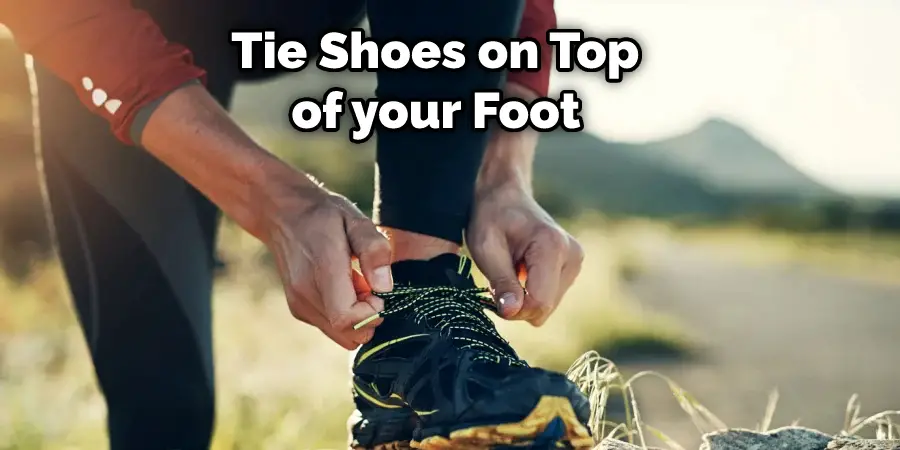
You Can check it Out to Disinfect Shoes After Plantar Wart
Frequently Asked Questions
What Shoes Should You Not Wear With Plantar Fasciitis?
Plantar Fasciitis is a condition that causes pain and inflammation in the heel and the ball of your foot. When wearing shoes that are too tight or high-heeled, it can lead to increased pressure on your plantar fascia. This tissue supports the arch of your foot and helps to move your feet forward.
Wearing shoes that are too loose or low-heeled may also cause this condition because they put extra stress on other areas of yourfoot, such as the balls of your feet and Achilles tendon. To reduce risk factors for Plantar Fasciitis, always consult with a podiatrist before buying new footwear and make sure to buy shoes that fit properly — you should be able to wiggle each toe while they’re on.
What Do Podiatrist Recommend for Plantar Fasciitis?
Plantar Fasciitis is a common condition that affects the feet, primarily the heel and the ball of the foot. It’s caused by inflammation of the plantar fascia, a sheet of tissue that runs along the bottom of the foot. This inflammation can cause pain, redness, and swelling. Podiatrists typically prescribe medication and/or physical therapy to treat Plantar Fasciitis.
Is It Better to Wear Shoes or Go Barefoot With Plantar Fasciitis?
Most people recommend choosing footwear that supports your feet and allows you to move freely. This will help to reduce the risk of plantar fasciitis, a condition that affects the arch of the foot and causes inflammation.
Will Plantar Fasciitis Ever Go Away?
Wearing shoes may be the traditional way of dealing with plantar fasciitis, but going barefoot may provide some benefits as well. While both methods have their own unique benefits and drawbacks, there is evidence to suggest that wearing shoes does not always offer the best solution.
Barefooting has been shown to help in reducing inflammation and improving blood flow to the feet. In addition, it can also reduce pain due to Arthritic conditions like plantar fasciitis by promoting greater flexibility and mobility in the lower extremities. Shoes, on the other hand, can restrict range of motion which could lead to even more discomfort and pain down the line.
Ultimately, it becomes important to find a method that works better for you particular situation based on your symptoms and preferences. However, regularly drinking bone broth or incorporating other gentle stretches into your routine might help ease Plantar Fasciitis early on before it becomes worse.
Conclusion
Plantar Fasciitis is a common injury that occurs when the plantar fascia ligament thickens and inflames. If you suffer from this condition, finding shoes comfortable enough for your foot can be challenging without causing too much pain. Even if you don’t have this specific condition, understanding how to lace up your shoe correctly will help prevent more severe injuries. Follow these simple steps above on how to lace shoes for plantar fasciitis correctly, so they work best for your feet!
You Can check it Out to Lace Running Shoes for Flat Feet

